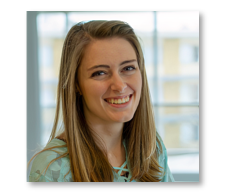
About Sydney Lowe:
Sydney Lowe is a Master’s of Applied Science candidate in Environmental Engineering at Dalhousie University. Working under the supervision of Dr. Amina Stoddart, her research focuses on the optimization of wastewater treatment plants to meet the lower regulation limits. Sydney received a Bachelor Degree in Biological Engineering with a Minor in Chemistry from Utah State University in 2018. Her time at Utah State involved evaluating a new tertiary treatment biocatalyst for WesTech engineering. Shortly after graduation, she spent some time as an aeration product Project Manager for WesTech Engineering in Salt Lake City, UT before arriving in Nova Scotia.
2021 Abstract: An Evaluation Of Bench And Pilot-Scale Primary Wastewater Treatment Processes To Meet More Stringent Wastewater System Effluent Regulations
Day 3: December 9, 2021 at 8:48 AM AT
Authors: Sydney B. Lowe1, Amina Stoddart2
1Masters candidate, Department of Civil and Resource Engineering, Dalhousie University, Halifax, NS
2PhD, Department of Civil and Resource Engineering, Dalhousie University, Halifax, NS
The Wastewater System Effluent Regulations (WSER) set national wastewater effluent quality standards that stipulate that average effluent carbonaceous biochemical oxygen demand (CBOD), and total suspended solids (TSS) must each not exceed 25 mg/L. Wastewater treatment facilities not meeting the standards require transitional authorization and have until the end of 2020, 2030 or 2040 to make system upgrades. Halifax Water operates several primary wastewater treatment plants, and effluent water quality from these facilities is already near the future discharge limits. Accordingly, the objective of this research was to investigate optimization options for existing infrastructure that could allow them to consistently meet national effluent quality standards. This was achieved through bench-scale testing to determine optimum chemical, and through pilot-scale studies that investigate the use of ballast material to further enhance the primary clarification process.
Key findings from bench-scale work are that an alum dose between 5-7 mg/L improves the system based on clarified TSS, and that a polymer dose greater than 1.25 mg/L should be maintained at all times. The pilot-scale ballasted flocculation system was able to achieve <40 mg/L CBOD5 in the treated effluent, and the pilot system outperformed the full-scale plant in terms of CBOD5 removal. The average TSS reduction for the pilot plant was 79-85%. Further, the optimum coagulant dose identified through pilot trials was similar to that determined at bench-scale. This suggests that optimizing chemical dosages and implementing ballasted flocculation may help these facilities in improving treated effluent quality, but additional unit processes and increasing efficiencies of current unit processes may be needed in the future to consistently meet the new WSER limits especially during peak wet weather events.
2020 Abstract: Evaluating CoMag as a technology to decrease the total suspended solids and biochemical oxygen demand values at Halifax Water’s Dartmouth Wastewater Treatment Facility.
Day 2: December 9, 2020 at 10:30 AM AT
As part of 2012’s Wastewater Systems Effluent Regulation of the Fisheries Act, Halifax Water’s Dartmouth Wastewater Treatment Facility is required to meet new carbonaceous biochemical oxygen demand (CBOD) and total suspended solids (TSS) limits. The previous limit for CBOD and TSS is 50 mg/L and 40 mg/L respectively. The new limits required both SBOD and TSS to be 25 mg/L. Halifax Water has a transitional authorization to make the proper adjustment to meet the new limits. One solution to meet the new limits is to add a magnetic ballast which allows faster settling time to the current chemical treatment operation. From August-October 2020 a pilot study was done to analyze Evoqua’s CoMag technology and determine its effectiveness to meet the new limits.
